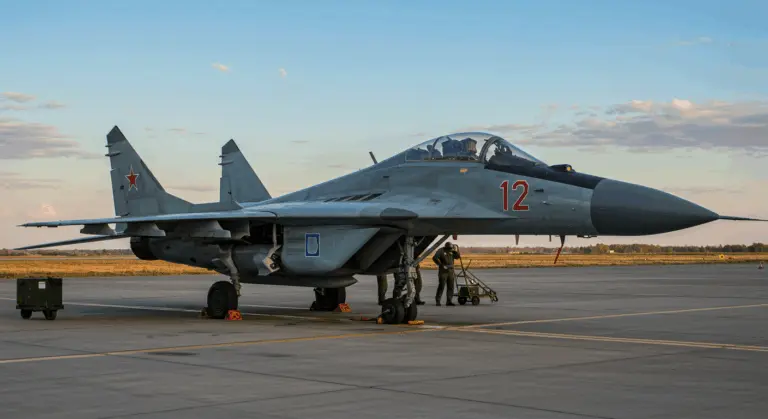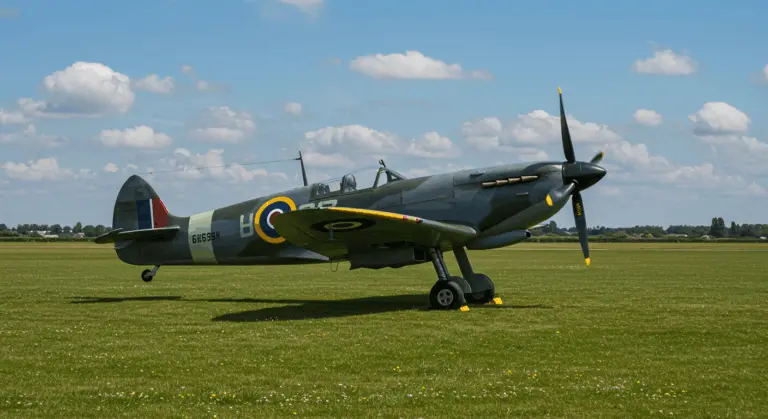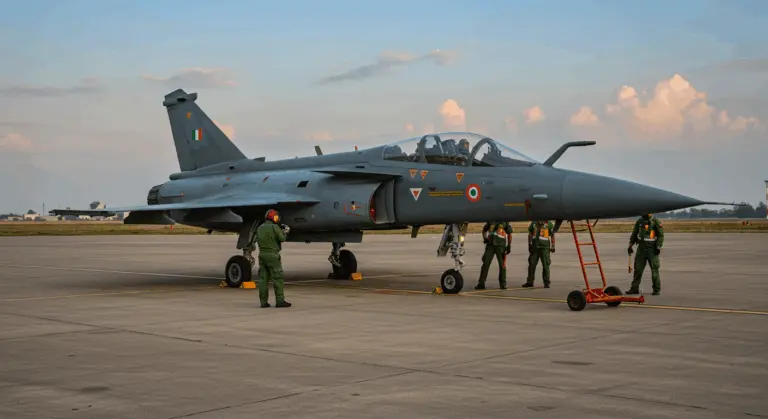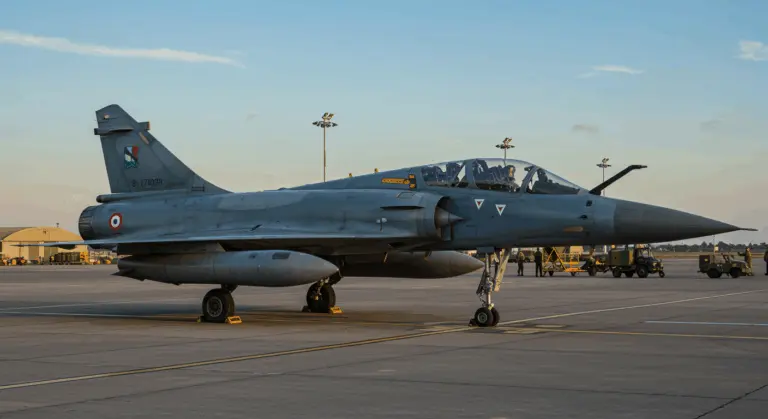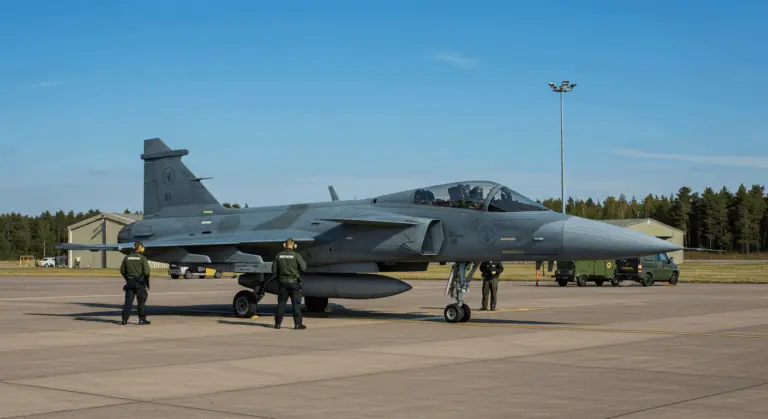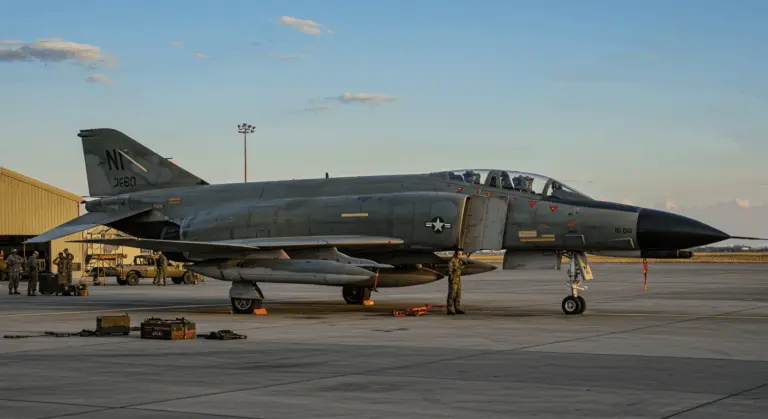Overview of the Hawker Typhoon
The Hawker Typhoon was a British single-seat fighter-bomber produced by Hawker Aircraft during World War II. Originally envisioned as a medium-to-high altitude interceptor to succeed the venerable Hawker Hurricane, the aircraft’s journey to operational excellence faced numerous challenges—hampered by technical problems that prevented its intended role.
These early setbacks led to an unexpected discovery. The Typhoon discovered its true vocation as a devastating low-altitude ground-attack platform, earning a reputation that struck fear into enemy ranks. German forces came to dread its appearance overhead, as this “tank-buster” delivered devastating attacks against armored formations, supply convoys, and railway infrastructure—ultimately becoming indispensable to Allied tactical air supremacy.
Design and Development of the Hawker Typhoon
Sir Sydney Came, Hawker Aircraft’s brilliant chief designer and the creative mind behind the Hurricane, conceived the Typhoon in the late 1930s. His vision? A more potent successor capable of matching—and defeating—the new generation of German fighters emerging on the horizon.
The Typhoon’s most striking characteristic was its unusually thick wing section, engineered to accommodate landing gear, ammunition stores, and weaponry. While this robust wing provided exceptional structural integrity and generous space for armament, it later contributed to the aircraft’s high-altitude performance limitations.
Development proceeded quickly, with the prototype’s maiden flight in February 1940. The aircraft was initially armed with twelve .303 Browning machine guns, though designers would later opt for four 20mm Hispano cannons to deliver more devastating firepower.
Early Development Challenges
The Typhoon’s path to operational service was hindered by significant technical obstacles:
-
Engine Reliability: The powerful Napier Sable engine suffered from persistent reliability issues and overheating, leading to frequent failures.
-
Structural Integrity: The tail section was prone to catastrophic failure during high-speed dives, requiring urgent reinforcement with fishplates.
-
Cockpit Safety: Carbon monoxide from the engine could seep into the cockpit, endangering the pilot.
-
High-Altitude Performance: The thick wing design created excessive drag at high altitudes, preventing the aircraft from effectively serving as an interceptor.
Operational Service During WWII
The Hawker Typhoon entered RAF service in 1941 with high expectations. However, its interceptor role proved deeply disappointing. This changed in late 1942 when commanders discovered its untapped potential for low-altitude ground-attack missions.
By 1943, the Typhoon had found its calling as an effective tank destroyer. Armed with rockets and bombs, it wreaked havoc on German armored units, particularly during the pivotal Battle of Normandy. So devastating were its attacks that German tank crews coined the fearful nickname “Jabs” (fighter-bombers) for these aircraft.
The Typhoon’s combat prowess extended through major operations including Market Garden and the Battle of the Bulge. Operating from hastily constructed forward airfields, squadrons could scramble at a moment’s notice to answer urgent calls for close air support.
Notable Pilots and Their Contributions
-
Squadron Leader Robert Wilkinson: Earned the Distinguished Flying Cross for leading devastating attacks on German armor during the Normandy campaign and establishing new squadron tactics.
-
Wing Commander Roland ‘Bee’ Beaumont: As CO of No. 609 Squadron, he pioneered low-level attack techniques and provided invaluable feedback that helped refine the Typhoon for its ground-attack role.
-
Flight Lieutenant Derek Lovell: Demonstrated extraordinary courage during Operation Overlord by destroying a key German ammunition dump despite heavy anti-aircraft fire.
-
Johnny Baldwin: A New Zealand-born pilot renowned for his skill with rockets, developing techniques to maximize accuracy while minimizing risk.
Modifications and Upgrades (1941-1945)
Throughout its operational life, the Typhoon underwent extensive modifications designed to eliminate its early weaknesses and amplify its combat potential:
-
Engine: The Napier Sable engine received improved cooling and reinforced components to increase reliability and reduce in-flight failures.
-
Armament: The initial twelve .303 machine guns were replaced by four 20mm Hispano cannons. Later, underwing racks were added for eight RP-3 rockets or two 500/1,000 lb bombs.
-
Structure: Reinforcing fishplates were added to the fuselage-tail joint to fix critical structural weaknesses.
-
Cockpit: A new bubble canopy replaced the original “car-door” design on later models, improving pilot visibility.
-
Systems: Air filters were introduced for engine protection on dusty airfields, and improved radios enhanced ground-force coordination.
Legacy and Surviving Aircraft
The Hawker Typhoon’s impact extends well beyond its wartime service record. Despite its turbulent genesis, the aircraft’s remarkable metamorphosis from failed interceptor to ground-attack legend significantly influenced post-war aviation philosophy.
Tragically few Typhoons survived the post-war scrapping programs that claimed most wartime aircraft. Today, aviation enthusiasts can witness only one complete original survivor: MN235, proudly displayed at the RAF Museum in Hendon, London.
The Typhoon’s historical significance continues to captivate aviation historians and enthusiasts through detailed scale models, comprehensive histories, and compelling documentaries. Its unmistakable silhouette and the distinctive growl of its Napier Sable engine have become synonymous with Allied tactical air power during Europe’s liberation.
Hawker Typhoon Preservation Group
The volunteer-driven Hawker Typhoon Preservation Group is working on an ambitious project: rebuilding Hawker Typhoon KIB, RB396, from the ground up. This particular aircraft carries a compelling wartime narrative—shot down during fierce combat operations over Northern Europe as the Third Reich crumbled.
This restoration project is one of the most challenging aircraft restoration projects in modern aviation history. Working with precious original components salvaged from crash sites across Europe, the dedicated team meticulously researches, sources, and fabricates parts to exacting historical standards.
Beyond the painstaking physical restoration, the Preservation Group fulfills a crucial educational mission. They meticulously document the Typhoon’s operational history while preserving the personal stories of pilots and ground crews who served with these aircraft.
Specifications of the Hawker Typhoon MK IB
| Specification | Details |
|—|—|
| Engine | Napier Sable II-A 24-cylinder H-type engine |
| Power | 2,180 hp |
| Maximum Speed | 413–422 mph (664–679 km/h) |
| Service Ceiling | 31,800–35,200 ft (9,700–10,700 m) |
| Wingspan | 41.6 ft (12.67 m) |
| Length | 31.9 ft (9.73 m) |
| Max Takeoff Weight| 13,250 lb (6,010 kg) |
| Range | 510 miles (820 km) on internal fuel |
| Armament | – 4x 20mm Hispano cannons
– 8x RP-3 rockets
– 2x 500 lb or 1,000 lb bombs |

